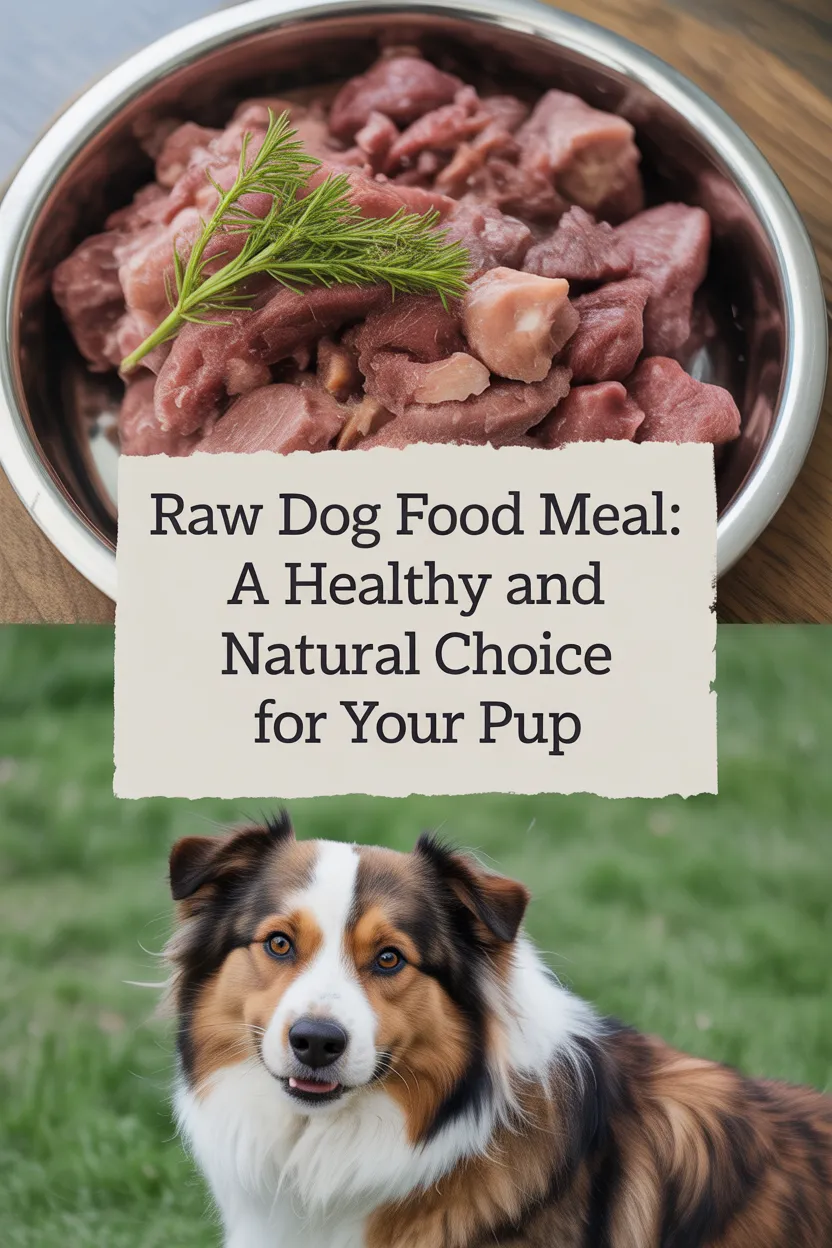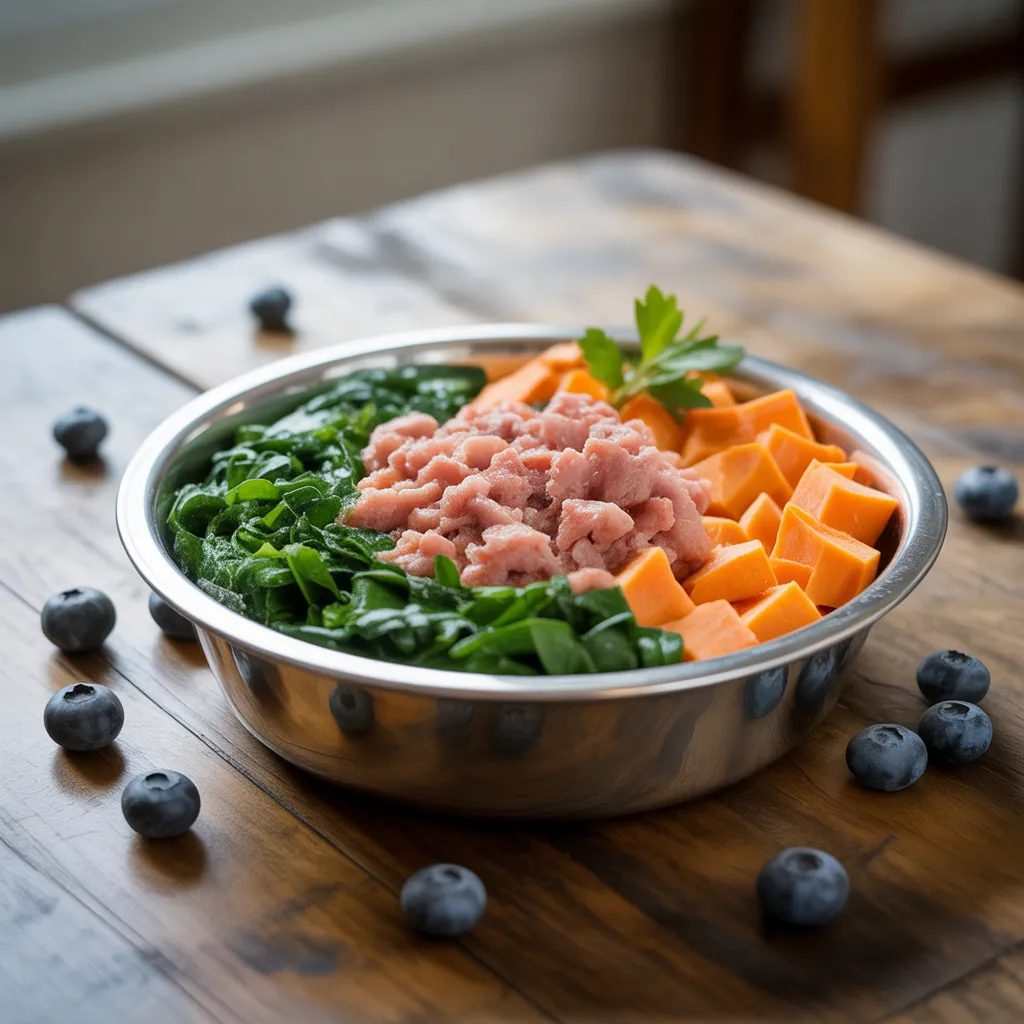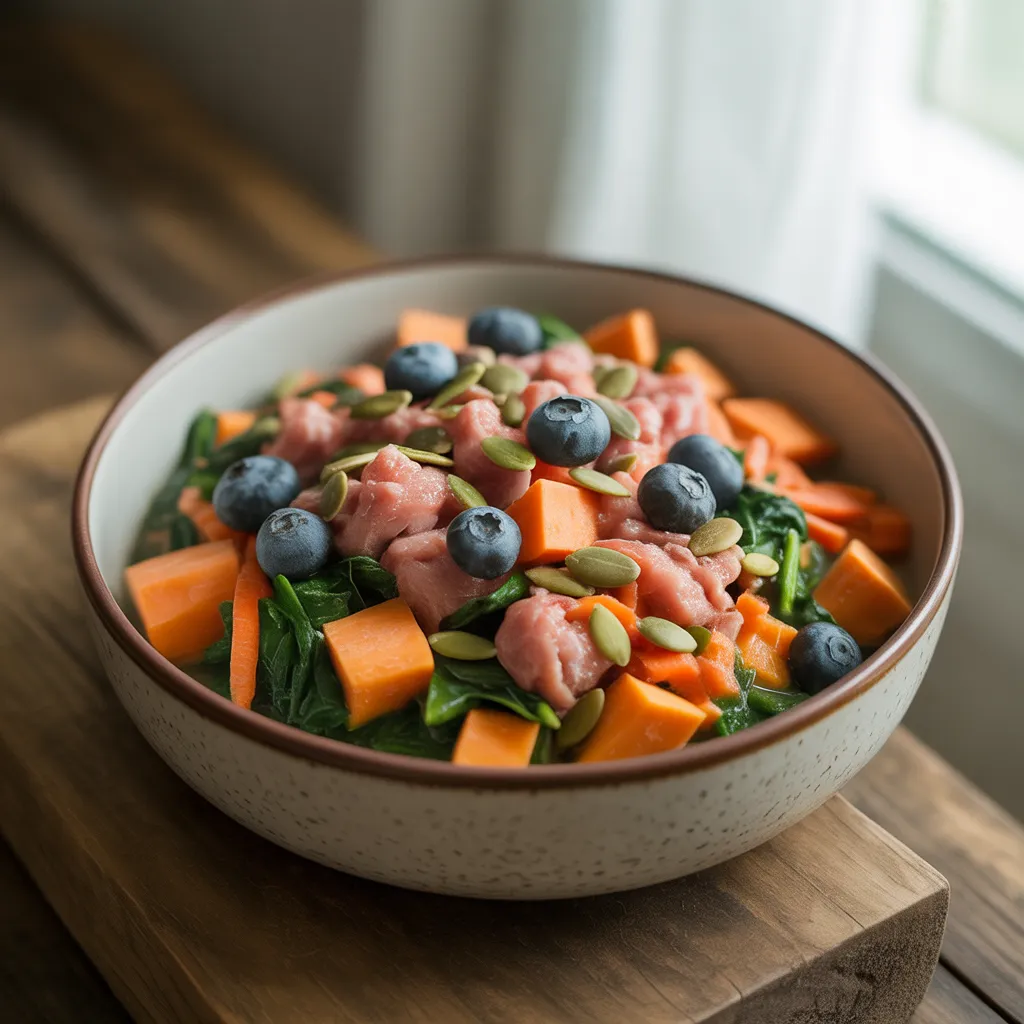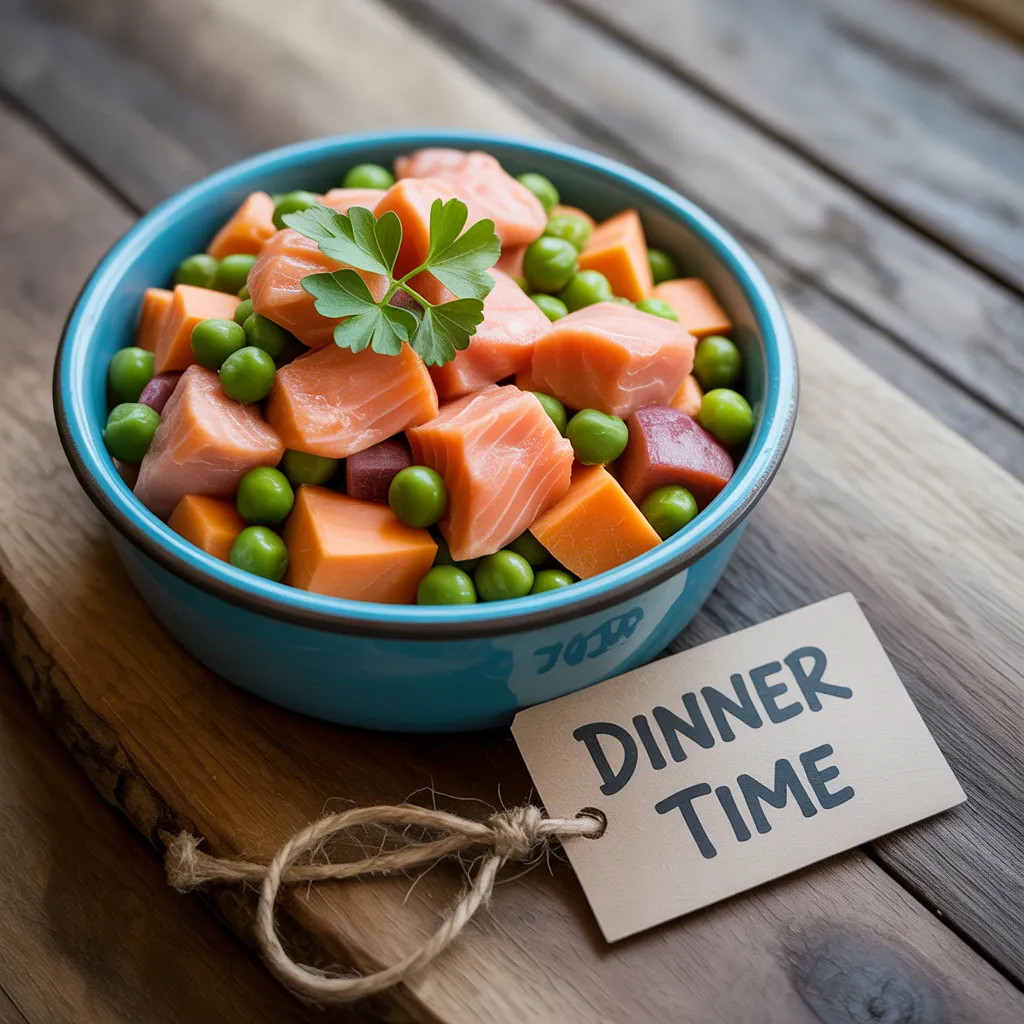Raw Dog Food Meal: A Healthy and Natural Choice for Your Pup

Nutrition is the foundation of your dog’s health. Many pet parents are turning to raw feeding as a way to provide a more natural diet. A well-balanced raw dog food meal can help improve skin, coat, digestion, and energy levels. But like any diet, it requires knowledge and care to do it right.
When I first explored raw feeding for my dog, I was overwhelmed by all the opinions. But after learning the basics and working with my vet, I saw amazing changes — shinier fur, fresher breath, and a happy, energized pup. Here’s what you need to know if you’re considering a raw dog food meal for your furry friend.

1. What Is a Raw Dog Food Meal?
A raw dog food meal typically includes:
- Raw meat (muscle meat and organ meat)
- Raw bones (edible, soft bones like chicken wings or necks)
- Vegetables and fruits (dog-safe options)
- Supplements (omega-3s, vitamins, minerals)
This diet mimics what dogs’ ancestors would have eaten in the wild, focusing on fresh, unprocessed ingredients.
2. Benefits of a Raw Dog Food Meal
Many dog owners report incredible improvements after switching to raw feeding:
- Healthier Skin and Shiny Coat: Thanks to natural fats and oils.
- Better Digestion: Less bloating, gas, and smaller stools.
- Higher Energy: Dogs often feel more active and playful.
- Cleaner Teeth: Raw bones can naturally help reduce plaque buildup.
- Weight Control: A natural balance of protein and fat helps maintain a healthy weight.
These are some of the main reasons raw feeding has become so popular.
3. Risks to Consider
While there are many benefits, it’s important to acknowledge the potential risks of a raw dog food meal:
- Bacterial Contamination: Raw meat can carry bacteria like salmonella. Always handle safely.
- Nutritional Imbalance: An unbalanced diet can lead to deficiencies.
- Bone Safety: Some bones can splinter and cause injuries if not chosen carefully.
Working with your vet or a canine nutritionist can help minimize risks.
4. Key Ingredients for a Balanced Meal
To build a balanced raw dog food meal, aim for:
- 70–80% muscle meat (beef, chicken, turkey, lamb, etc.)
- 10% raw meaty bones (safe, soft bones only)
- 10% organ meat (liver, kidney, heart)
- 5–10% vegetables and fruit (carrots, spinach, blueberries, pumpkin)
Supplements like fish oil or kelp may be needed to fill nutritional gaps.
5. Sample Raw Dog Food Meal Recipe
Here’s a simple example:
- 1 cup ground turkey
- ½ cup raw meaty chicken necks
- ¼ cup chopped carrots and spinach
- 2 tablespoons beef liver
- 1 teaspoon fish oil
Mix and serve fresh. Adjust portion sizes based on your dog’s size, age, and activity level.

6. Tips for Safe Raw Feeding
If you decide to feed a raw dog food meal, keep these safety tips in mind:
- Always wash hands and bowls after handling raw food.
- Store meals in the fridge or freezer to prevent spoilage.
- Thaw food safely in the refrigerator, not at room temperature.
- Introduce raw meals gradually to avoid stomach upset.
7. When to Avoid Raw Feeding
Not every dog is suited for a raw diet. Puppies, senior dogs, or dogs with immune system issues may need cooked or specially formulated diets instead. Always consult your vet before making big changes.

Final Thoughts
A raw dog food meal can be a healthy, natural choice for your pup when done correctly. It’s not just about feeding raw meat — it’s about creating a balanced, safe, and nutritious diet tailored to your dog’s needs.
At the end of the day, the goal is simple: giving our dogs the best chance at a happy, healthy life. And whether it’s raw meals, kibble, or a mix, what matters most is the love and care you put into their well-being. 🐶❤️






